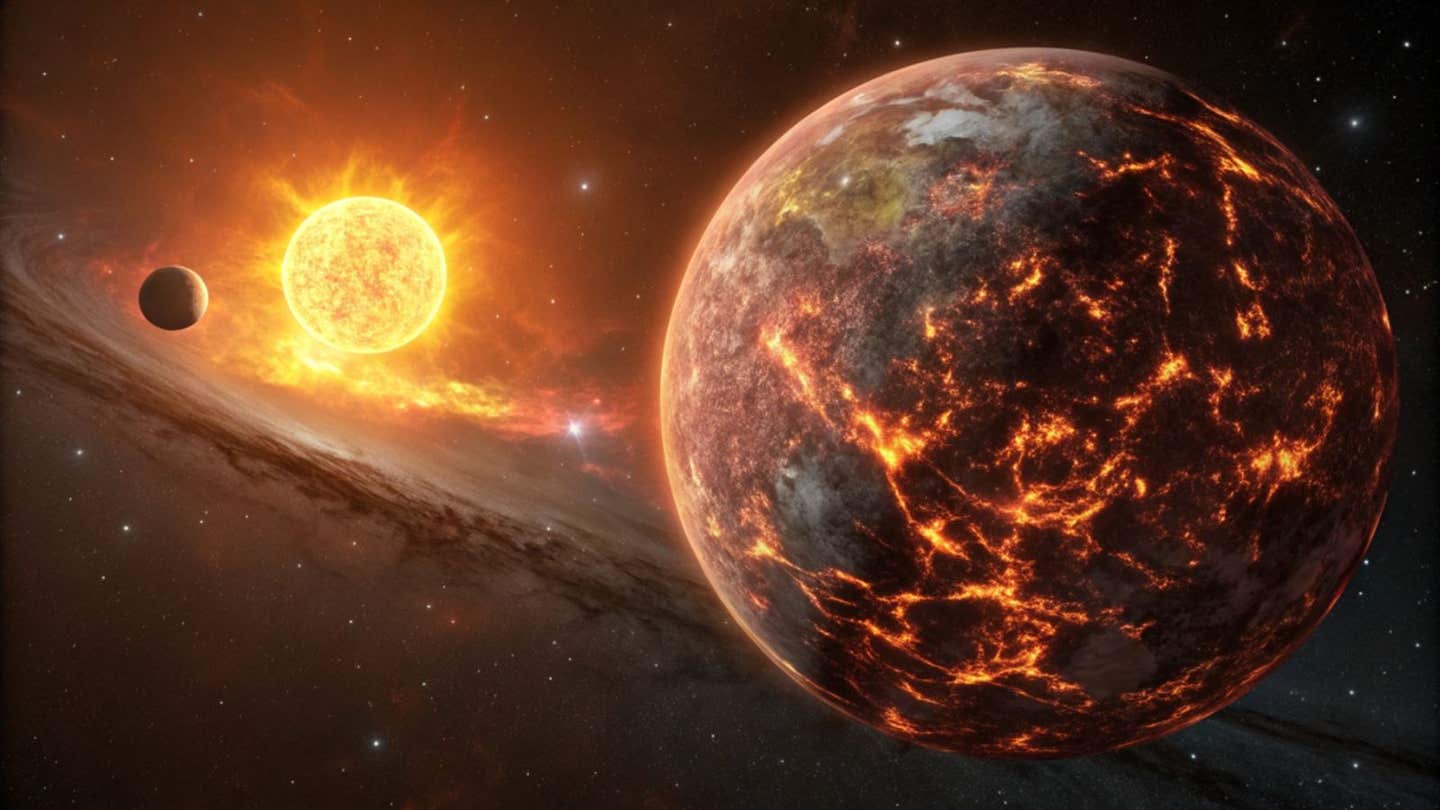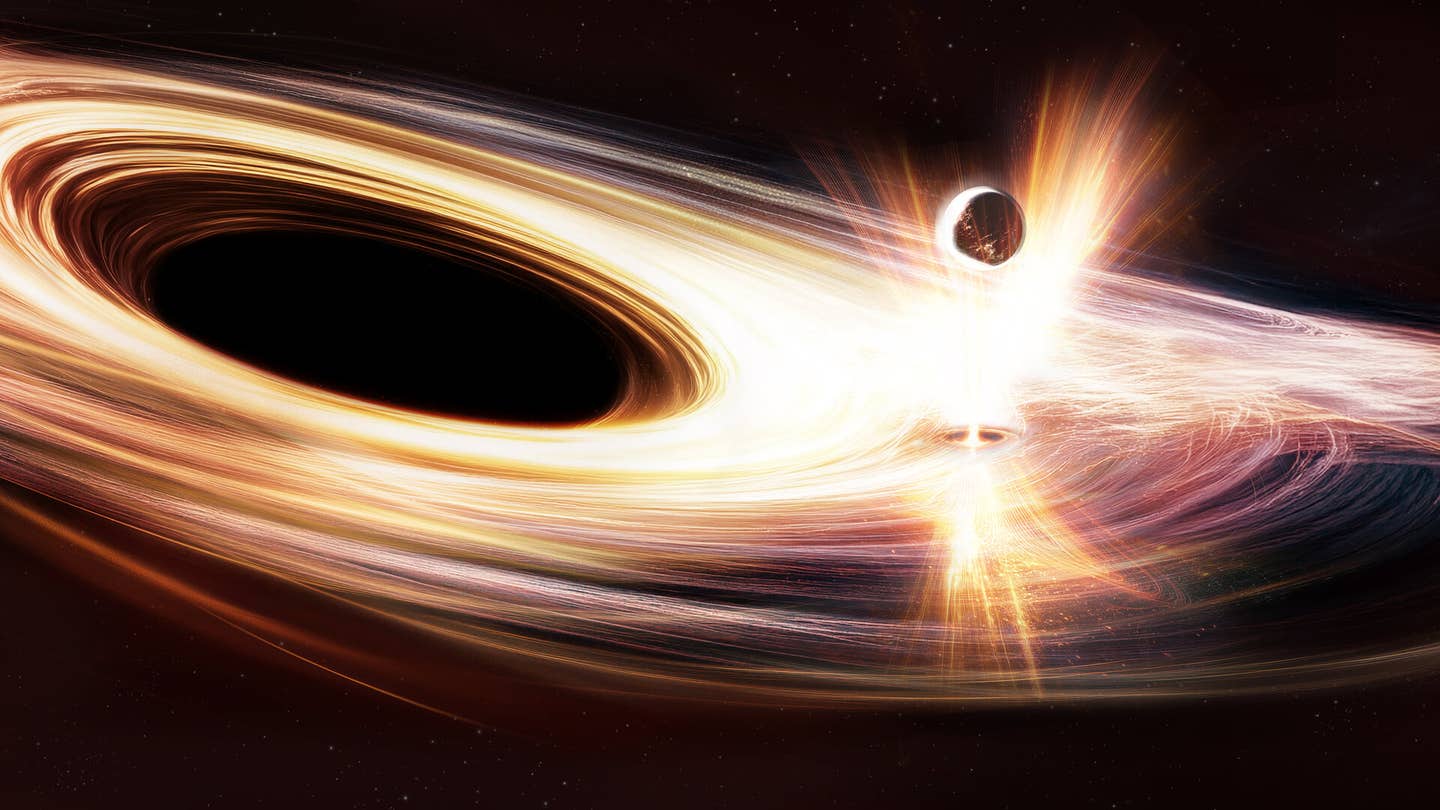Astronomers discover ultra-dense ‘super-Earth’ with the density of lead
K2-360 b, an ultra-short-period planet as dense as lead, reveals its secrets alongside its massive companion, K2-360 c.

Astronomers discover K2-360 b, a lead-dense ultra-short-period planet, and its massive companion, K2-360 c. (CREDIT: CC BY-SA 4.0)
Astronomers have uncovered an extraordinary planetary system that offers fresh insights into the dynamics of planets orbiting in extreme environments. This discovery involves a Sun-like star named K2-360, situated about 750 light-years from Earth, and two fascinating planets: one of the densest known ultra-short-period (USP) planets and a mysterious outer companion.
The inner planet, K2-360 b, stands out as a true heavyweight among exoplanets. This rocky "super-Earth" is approximately 1.6 times the size of Earth but crams in 7.7 Earth masses, giving it a staggering density of about 11 grams per cubic centimeter—similar to lead.
Completing an orbit around its host star in just 21 hours, K2-360 b is an extreme example of a USP planet, a rare category of exoplanets with orbital periods shorter than a day.
John Livingston, the study's lead author from the Astrobiology Center in Tokyo, highlights the significance of K2-360 b: "It's as dense as lead, packing nearly 8 Earth masses into a ball only slightly larger than our planet. This makes it the densest known planet among ultra-short-period planets with precise parameters."
The discovery, first made in 2016 by NASA's K2 mission, relied on the transit method, which detects planets as they pass in front of their stars, temporarily dimming the starlight. Subsequent observations with advanced spectrographs, such as HARPS and HARPS-N, confirmed K2-360 b's planetary nature and unveiled the presence of a second planet, K2-360 c.
K2-360 c, the outer companion, does not transit its star, making its size challenging to determine. However, its gravitational tug on the star provided enough data to estimate its mass—at least 15 times that of Earth.
Unlike the rocky inner planet, K2-360 c is likely a gaseous world with characteristics similar to Neptune. Its orbital period spans 9.8 days, placing it much farther from the star than its blisteringly close counterpart.
The relationship between these two planets sheds light on the dramatic forces shaping planetary systems. Models suggest that K2-360 c may have played a pivotal role in K2-360 b's journey inward.
Related Stories
High-eccentricity migration, a process involving gravitational interactions between planets, likely made K2-360 b's orbit highly elliptical. Over time, tidal forces from the host star circularized its orbit, trapping it in its current, ultra-short-period configuration.
"This mechanism, combined with tidal dissipation, offers a plausible explanation for how K2-360 b ended up in its extreme orbit," explains Alessandro Trani from the Niels Bohr Institute. Alternatively, the planet’s migration could have been influenced by interactions between its spin and axial tilt.
The extreme conditions experienced by K2-360 b have stripped away much of its original atmosphere, leaving behind a rocky core. This dense remnant resembles a "super-Earth" more than a "super-Mercury," with a substantial iron core making up about 48% of its mass. Surface temperatures are likely high enough to maintain oceans of molten lava, highlighting the planet’s stark difference from Earth-like conditions.
Davide Gandolfi of the University of Turin elaborates on this transformative process: "This planet gives us a glimpse into the possible fate of some close-in worlds, where only the dense, rocky cores remain after billions of years of evolution."
The discovery of K2-360 b adds to the growing population of USP planets, a class that challenges current theories of planetary formation. These planets are too close to their stars to have formed in situ. Instead, they likely originated farther out in their systems before migrating inward.
Unlike "hot Jupiters," which are thought to lose their gaseous envelopes due to stellar radiation, K2-360 b represents an entirely different evolutionary pathway.
K2-360's host star, a Sun-like star with similar chemical abundances to our own, has provided researchers with clues about the system's history. The presence of the massive outer planet supports the theory that USPs can form and evolve within multi-planet systems through a combination of gravitational and tidal forces.
Mahesh Herath, a Ph.D. candidate at McGill University, notes the importance of K2-360 b’s structure: "Our interior structure models indicate that K2-360 b probably has a substantial iron core surrounded by a rocky mantle. Understanding planets like this helps us piece together how terrestrial planets form and evolve under different conditions throughout the galaxy."
While extreme, K2-360 b is not the densest exoplanet ever discovered. Planets like TOI-4603b, with densities of 14.1 grams per cubic centimeter, push the boundary between planet and brown dwarf. In contrast, the Kepler 51 system hosts planets so low in density that they resemble cotton candy. K2-360 b occupies a middle ground, making it a particularly valuable object of study.
The discovery of K2-360 b and its companion highlights the diversity of planetary systems and the wide range of conditions under which planets can form and evolve. This system serves as a natural laboratory for understanding the forces that shape planetary architecture, particularly in extreme environments.
"K2-360 is an excellent laboratory for studying how planets form and evolve in extreme environments," concludes Livingston. The study published in Scientific Reports provides yet another example of the universe's capacity to produce worlds beyond human imagination.
Note: Materials provided above by The Brighter Side of News. Content may be edited for style and length.
Like these kind of feel good stories? Get The Brighter Side of News' newsletter.
Joshua Shavit
Science & Technology Writer | AI and Robotics Reporter
Joshua Shavit is a Los Angeles-based science and technology writer with a passion for exploring the breakthroughs shaping the future. As a contributor to The Brighter Side of News, he focuses on positive and transformative advancements in AI, technology, physics, engineering, robotics and space science. Joshua is currently working towards a Bachelor of Science in Business Administration at the University of California, Berkeley. He combines his academic background with a talent for storytelling, making complex scientific discoveries engaging and accessible. His work highlights the innovators behind the ideas, bringing readers closer to the people driving progress.



